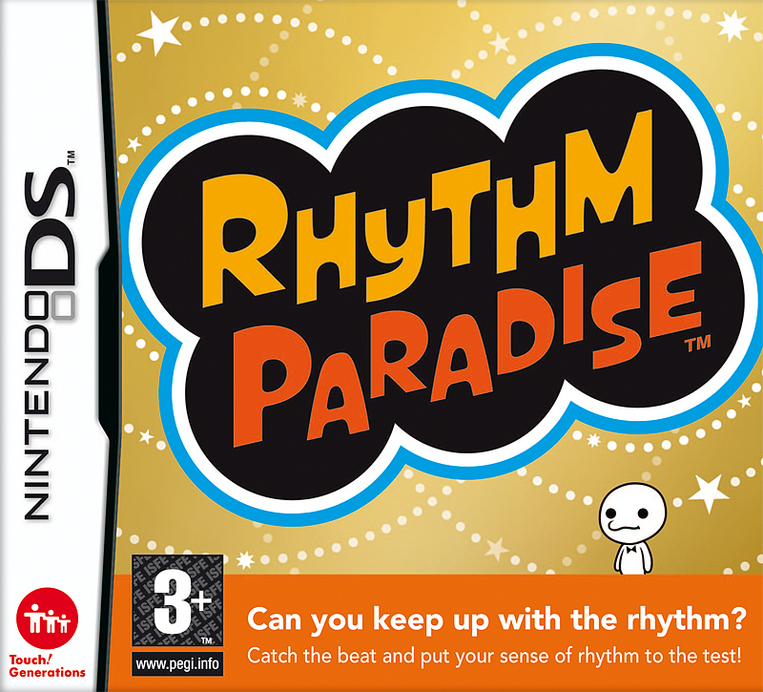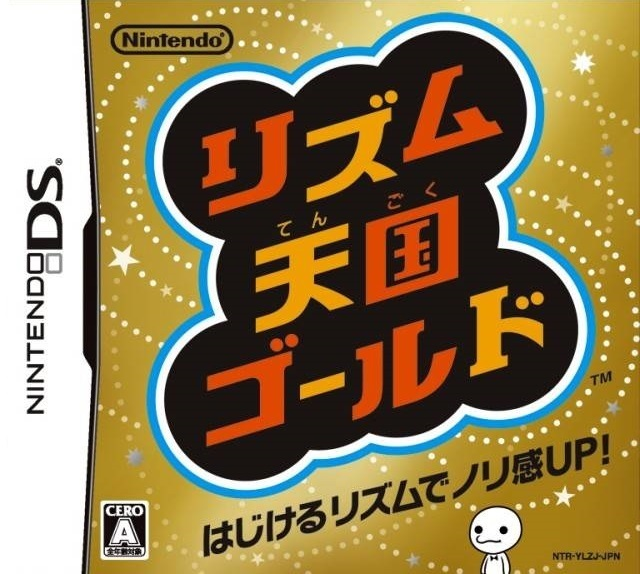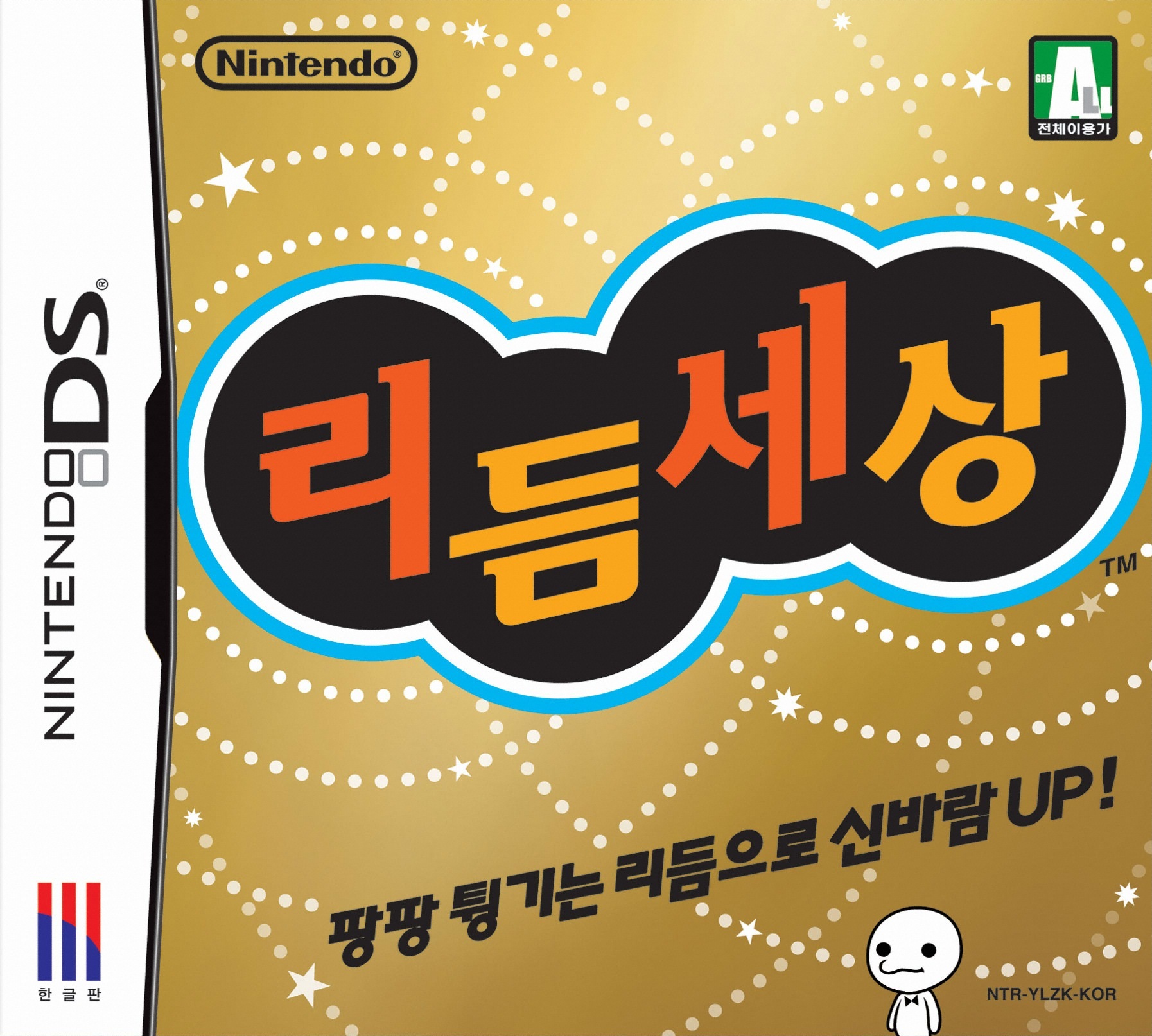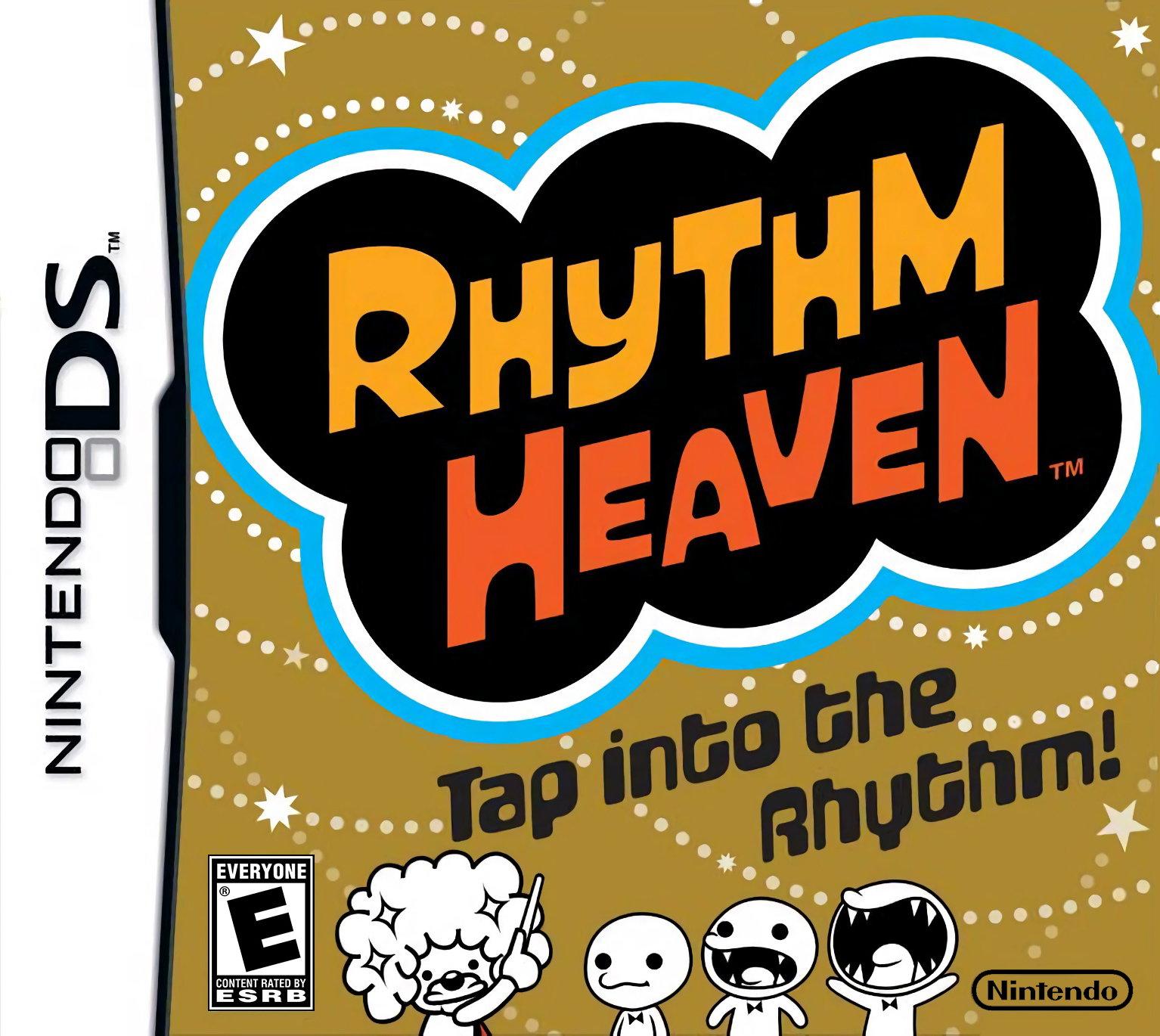
Rhythm Heaven: Difference between revisions
Jump to navigation
Jump to search
(→Trivia) |
m (Undo revision 55219 by LoogiGreenMan (talk) That number is incorrect as there are 6 stages with 4 games each = 24 + Airboarder totalling 25, the same as Tengoku.) Tag: Undo |
||
| Line 168: | Line 168: | ||
**A [[Rhythm Game]] that features [[The Wandering Samurai]] as the main character—he was in an [[Endless Game]] instead. | **A [[Rhythm Game]] that features [[The Wandering Samurai]] as the main character—he was in an [[Endless Game]] instead. | ||
**A variation of [[Night Walk]], [[The Clappy Trio]], [[Sneaky Spirits]], [[Power Calligraphy]], and/or [[Tap Trial]]. | **A variation of [[Night Walk]], [[The Clappy Trio]], [[Sneaky Spirits]], [[Power Calligraphy]], and/or [[Tap Trial]]. | ||
**The [[Two-Player Menu]]; albeit Rhythm Tengoku's original GBA version doesn't have that either | **The [[Two-Player Menu]]; albeit Rhythm Tengoku's original GBA version doesn't have that either. | ||
* This is the first ''Rhythm Heaven'' game to use Rhythm Games with 3D models—them being [[Built to Scale (DS)|Built to Scale]], [[Rhythm Rally 2|Rhythm Rally]] and [[Airboarder]]. | * This is the first ''Rhythm Heaven'' game to use Rhythm Games with 3D models—them being [[Built to Scale (DS)|Built to Scale]], [[Rhythm Rally 2|Rhythm Rally]] and [[Airboarder]]. | ||
* This is the time were certain minigames can count early/late cues as hits. They include [[Shoot-'em-up 2|Shoot-'Em-Up]], [[Frog Hop]], [[Lockstep]], [[Jumpin' Jazz|and]] [[Lockstep 2|their]] [[Shoot-'Em-Up 2 (DS)|sequels]]. | * This is the time were certain minigames can count early/late cues as hits. They include [[Shoot-'em-up 2|Shoot-'Em-Up]], [[Frog Hop]], [[Lockstep]], [[Jumpin' Jazz|and]] [[Lockstep 2|their]] [[Shoot-'Em-Up 2 (DS)|sequels]]. | ||
Revision as of 18:57, 22 November 2020
Rhythm Heaven
Image
Developer
Nintendo SPD1
Publisher
Platform
Release date(s)
Ratings
Modes
One Player
50 (+1 Credits)
Navigation
Rhythm Heaven (リズム天国ゴールド?, Rhythm Tengoku Gold), known as Rhythm Paradise in Europe and 리듬 세상 (Rhythm World?) in Korea, is the second game in the Rhythm Heaven Series, released for the Nintendo DS on July 31, 2008 in Japan, April 5, 2009 in North America, May 1, 2009 for Europe and September 24, 2009 for Korea.
It was developed by Nintendo SPD1 and most of the music was composed by Japanese producer/singer Tsunku. It was the first game in the series to be released outside of Japan.
Gameplay
The game is meant to be played by holding the Nintendo DS sideways. Left-handers have an option to change the position of the visual gameplay to allow easier playing. The game primarily uses the touch screen.
Development
Rhythm Heaven's development "wasn't easy" for the staff. Osawa didn't like the idea of using buttons, so he considered a control mechanic that involved the Touch Screen. The ability to touch the edge of the Touch Screen was considered, but was determined to be too difficult.
The Flick action took the staff a "little getting used to" as they had to make it feel "fair" to the player until they realised that if flicking was combined with the music it would give the players a "good sense of timing". The Flick action took them about "two to three months" to research and "six months" to eventually adapt the control into Rhythm Heaven.[1] Tsunku really liked the idea of the Flick action regardless of the long time to adapt. At that time, he thought of the idea for Frog Hop, which became one of the very first games to be made for Rhythm Heaven.[2]
Not unlike many other games, there are various differences across regions.
Controls
The controls for Rhythm Heaven, just like every other game in the series, are very basic. There are four main mechanics used, both for all of the mini games available to play and just getting around the game itself. These controls are tapping, holding, sliding and flicking, in addition to the L/R buttons that are used in exclusively Rockers 2. The start button is used to pause during a mini game.
List of Rhythm Games
Reception
Rhythm Heaven received fairly positive reviews. Official Nintendo Magazine gave this game 82% for it's "hilarious games" and "superb soundtrack" but it was marred of it's length.[3] Jeremy Parish of 1UP.com gave this game a B+ as a "must-play experience" but felt forced to make use of the touch screen.[4] Craig Harris of IGN gave the game an "Amazing" rating of 9.0 for being "off-the-wall" and "incredibly fun and addictive" but criticized the "awful lyrics" in songs.[5] This game is known to be favorable on Metacritic, with an average score of 84.[6]
Trivia
- This is the only Rhythm Heaven game to not have the following:
- A normal Rhythm Test. Instead, a flicking practice is used.
- A Remix with lyrics. While Remix 2 has vocals, they do not count as lyrics.
- A Rhythm Game that features The Wandering Samurai as the main character—he was in an Endless Game instead.
- A variation of Night Walk, The Clappy Trio, Sneaky Spirits, Power Calligraphy, and/or Tap Trial.
- The Two-Player Menu; albeit Rhythm Tengoku's original GBA version doesn't have that either.
- This is the first Rhythm Heaven game to use Rhythm Games with 3D models—them being Built to Scale, Rhythm Rally and Airboarder.
- This is the time were certain minigames can count early/late cues as hits. They include Shoot-'Em-Up, Frog Hop, Lockstep, and their sequels.
- For promotional purposes, pop singer Beyoncé appeared in the North American commercials.
- The American singers are uncredited in the Staff Credits. They include Lores Ferris Dandoy, Brad Holmes, Ayaka Nagate, and Frank LeGree.
- This is the game with the most Rhythm Toys, with seven; and the most non-multiplayer Endless Games, with six.
- Before accessing to the save files, a circle with a picture must be flicked out of the top of the screen. The picture can be: two flowers, the Barista, three Notes, the Dog Ninja or the Student from DJ School.
In Other Languages
| Language | Name | Meaning |
|---|---|---|
| リズム天国ゴールド | Rhythm Heaven Gold | |
| Rhythm Heaven | ||
| Rhythm Paradise | ||
| Rhythm Paradise | ||
| Rhythm Paradise | ||
| Rhythm Paradise | ||
| Rhythm Paradise[7] | ||
| Rhythm Paradise[8] | ||
| 리듬 세상 | Rhythm World |
References
- ↑ https://web.archive.org/web/20090701104808/http://www.rhythmheaven.com/iwata3.html
- ↑ https://web.archive.org/web/20090701104808/http://www.rhythmheaven.com/iwata4.html
- ↑ |http://web.archive.org/web/20090502010320/http://www.officialnintendomagazine.co.uk/article.php?id=8139
- ↑ http://www.1up.com/reviews/rhythm-heaven
- ↑ http://uk.ign.com/articles/2009/03/31/rhythm-heaven-review
- ↑ http://www.metacritic.com/game/ds/rhythm-heaven
- ↑ Iwata Vraagt: Rhythm Paradise
- ↑ Iwata Asks Rhythm Paradise
| Rhythm Heaven | ||
|---|---|---|
| Rhythm Games | ||
| Medal Corner | Endless Games | |
| Rhythm Toys | ||
| Guitar Lessons ★Basic Course★ |
||
| Guitar Lessons ★Technical Course★ |
||
| Miscellaneous | Music Corner • Reading Corner • Practice Flicking • Perfect Campaign • Characters • The Rhythm League • Rhythm Heaven • Rock 'n' Roll Hall • Development History • Rhythm Tengoku Gold Comic | |
| Rhythm Heaven Series | |||
|---|---|---|---|

|
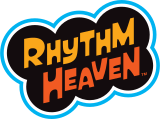
|

|
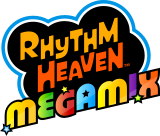
|
| 2006, GBA • 2007, Arcade | 2008-2009, DS | 2011-2012, Wii • 2016, Wii U | 2015-2016, 3DS |
